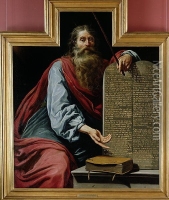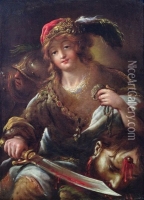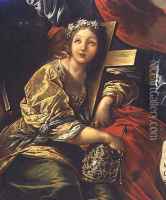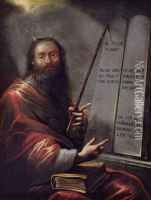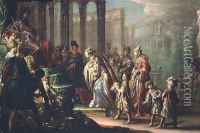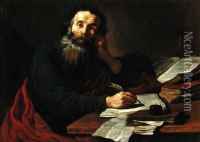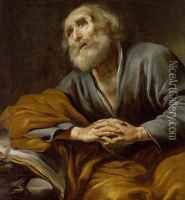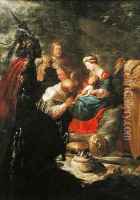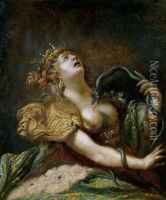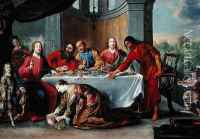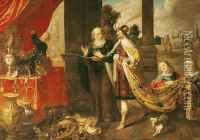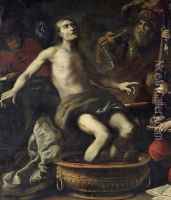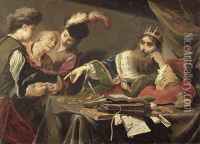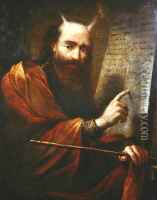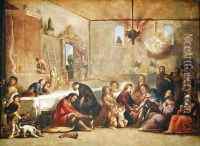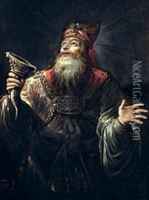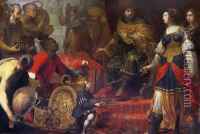Claude Vignon Paintings
Claude Vignon was a French painter, engraver, and etcher of the early Baroque period, whose eclectic and unconventional art reflected a transition from Mannerism to the more naturalistic approach of his contemporaries. Born in Tours, France, in 1593, Vignon was trained in the studio of the Flemish artist Abraham Bloemaert, who greatly influenced his early work. Vignon's style, however, also showed the impact of Caravaggio's dramatic use of light and shadow, which he likely absorbed during his travels to Italy early in his career.
Vignon worked in various genres, including history painting, portraiture, and still lifes. He was known for his sophisticated use of allegory and his ability to blend different artistic trends of his time. This stylistic eclecticism made him a favorite among collectors who sought innovative and unique works.
In his lifetime, Vignon received numerous commissions for religious subjects, which he executed with a certain theatricality, characteristic of the Baroque era. He was also active in the Paris art scene and participated in the decoration of several important Parisian buildings, such as the Luxembourg Palace.
Despite his success, Vignon's work fell out of favor after his death in 1670, overshadowed by the likes of Nicolas Poussin and Georges de La Tour. However, in recent years, there has been a renewed interest in his oeuvre, leading to a reevaluation of his place in the history of French art. Vignon's paintings are now recognized for their originality and the skillful combination of various artistic influences that make his work stand out in the complex tapestry of 17th-century European art.
